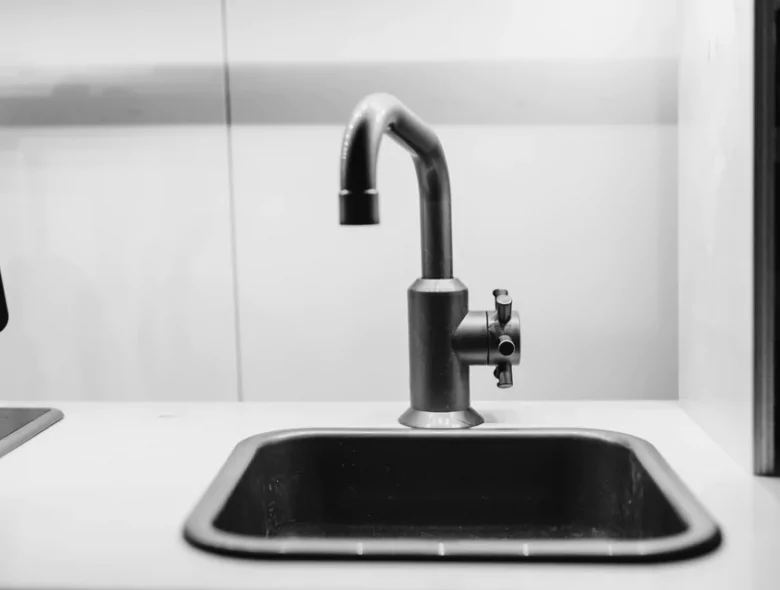Various things in a Japanese apartment will be different from the rest of the world. Check out our article on Japanese sinks.
Living in Japan comes with a learning curve as multiple facets of your general day-to-day living will need to be adjusted. There are many things about your living area that will need to be addressed, from your wall sockets down to your kitchen. One household item that will need some getting used to is the typical Japanese sink.
The average Japanese sink has gone through a few changes over time. The majority of the changes have come from becoming more westernized as the years go on. The average sink in a Japanese household will be small and found in the kitchen, bathroom, and sometimes near the toilets or on top of them. We will look at each room that would typically have a sink and the different ways you will need to do cleaning and general upkeep.

Kitchen
Your average kitchen in Japan will not boast much space. You will have enough room for a single person to cook a small to a moderate-sized meal. Typical single room apartments will leave most of the space for living or storage and leave just enough room to do light daily cooking. This is true for the stove, counter space, and sink. A kitchen sink in Japan is roughly half the size of a typical western kitchen sink. The Japanese sink isn’t very wide or deep, and it can fill up quickly with water and dirty dishes. This means that there is less room to dry your utensils, you will need to buy smaller pots just to fit under the sink head, and there is also a low flow from the usual sink.
You can try to counter some of these problems by buying cutting boards made to fit across the sink and allow for more room to prepare food, or it could offer some drying areas. A sink in the Japanese kitchen will have an extra feature that Western countries’ sinks do not have. The drain has a plastic filter meant to catch any food or large particle that will go into it. If you don’t clean it often and ensure you get the small nooks and crannies, it will begin to smell. The 100-yen stores sell brushes that are meant to clean the small filters. You can also buy special nets that fit inside them. If you have an aversion to getting your hands dirty with rotten food or leftover grease and grime, you can use the sink nets to catch everything before it hits the plastic. When they begin to fill up, you can remove the net and throw it away. These are good to make it easier to clean, but they will cost money each time, and there is still a need to clean the original filter to prevent smells and grime build-up.
If you have trouble keeping the smell in check after cleaning your sink and filter, there are dissolving capsules that you can buy at 100-yen stores that help remove bad smells. They have a few kinds of scents that you can choose from, and you get over 10 caps at a time. All you have to do is place a cap in the plastic filter, and it will slowly dissolve over time with water. There are other cleanings and deodorizing products that you can buy for your sink, and they can be found at reasonable prices at many stores. You can also get sink head attachments to change the flow of the sink to a wide spray. This will help when cleaning dishes and quickly filling the tub.

Bathroom/Toilet
Different apartments will have the toilet and shower room set-up differently. The typical Japanese apartment will have the rooms separate from each other. The sink will usually be in the shower room, and it will have a small area to hold your toothbrush and other small self-grooming items. The sink in there is like a western one and doesn’t have a filter inside of it. You will need to buy a snake or some other scrubbing items. It will need regular cleaning and maintenance, but it is close to the western style so, you can do your usual cleaning rituals.
The toilets in Japan can come in many sizes and variations. The traditional Japanese toilets are set into the floor and require you to squat over them. There are the western style toilets have had generally replaced the older versions. Japan has made many advancements in how toilets are made with some of the most advanced toilets on the earth. They can measure heartbeats, warm the seat, have bidets in them, and can self-flush. The feature that they all share is a small sink on top of the toilet. These are meant to fill the bowl once you flush. You can use it as a handwashing sink once you finish, and it doesn’t take much to clean it. There are air fresheners made specifically for the toilet sinks. They slowly drip the solution as they get water poured on them.

Extra Sink Areas
Some homes have an extra sink in certain areas of apartments or houses. These are meant solely for hand washing. They will be tucked into corners or near the toilet. You will only find these in bigger houses and apartments. They are set up like western sinks and only need regular cleaning.
These are the usual sinks you will find in a Japanese house or apartment. They are usually the same as western ones, but they have some unique things that may need to be done. Make sure to check all of the places you will need to clean, and you will have an easier time keeping your house clean.



